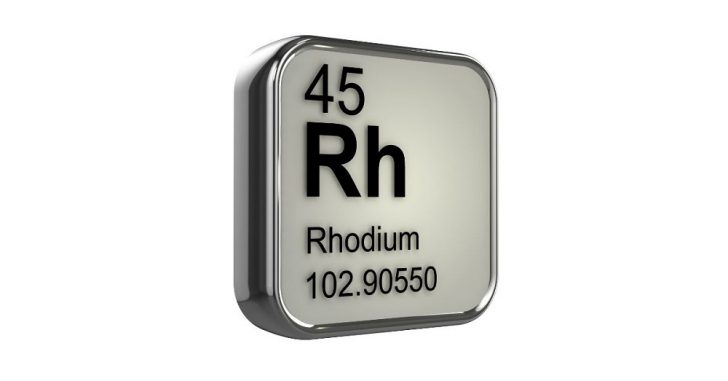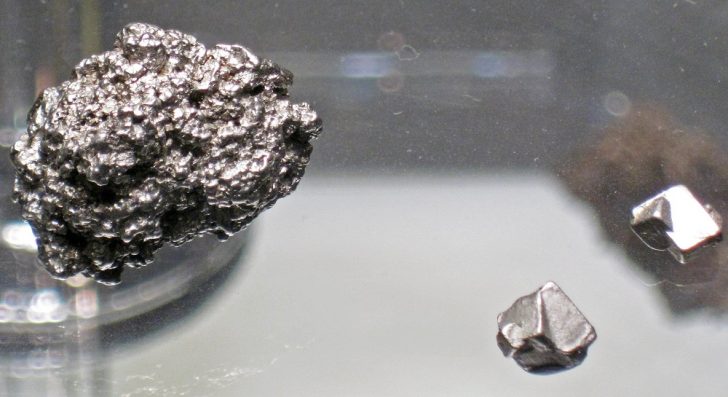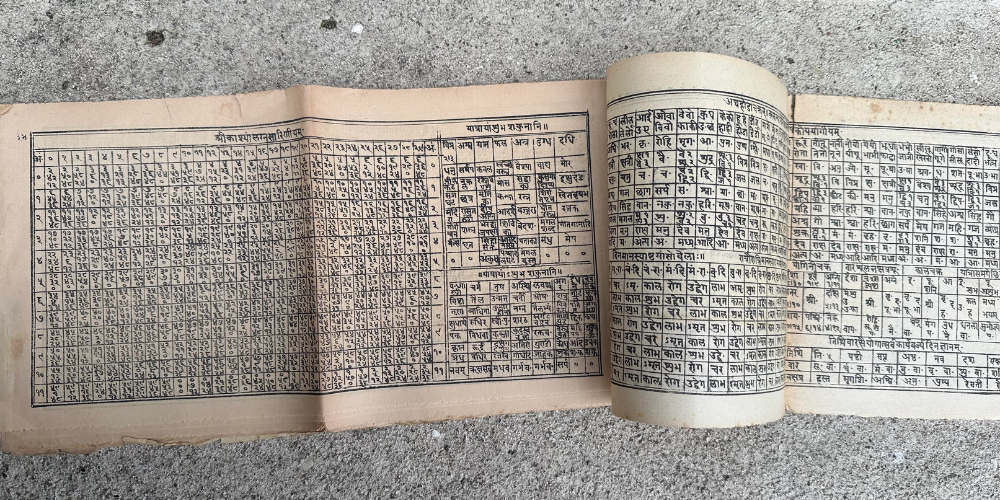In the annals of scientific history, there are moments of uncertainty when an unexpected discovery changes the course of knowledge. One such moment occurred on a Christmas Eve in 1800 when English scientist William Hyde Wollaston laid his hands on a piece of nearly pure platinum ore obtained clandestinely from the Spanish colony of Nueva Granada (modern-day Colombia).
Little did he know that this unassuming chunk of ore would lead to the revelation of a new, exceedingly rare metal—rhodium. Today, rhodium holds the distinction of being the Earth's rarest and most expensive precious metal.
Rhodium Metal
Wollaston embarked on an ambitious quest to develop a chemical process that could transform the solid platinum ore into malleable platinum. During his experiments, he encountered a surprise--two distinct residues emerged as he dissolved the platinum ore in his backyard laboratory.
While one dissolved into a soluble solution, the other remained as reddish salts, a phenomenon not associated with platinum. In 1803 and 1804, Wollaston announced that he had stumbled upon two new precious metals: palladium and rhodium.

James St. John/ Flickr | Rhodium was discovered in 1803 by English chemist William Hyde Wollaston
The Jewel in Earth's Crown
Rhodium, a chemical element bearing the symbol Rh and atomic number 45, possesses a remarkable luster and exceptional corrosion resistance. Its significance lies in its rarity and wide-ranging applications across automotive, jewelry, chemicals, and electronics industries.
According to Shaun Peterson, supervisor of jewelry manufacturing arts research and development at the Gemological Institute of America (GIA), rhodium's unparalleled value is attributed to its scarcity and extensive use.
The burgeoning demand for rhodium, primarily driven by the automotive industry's stringent emissions regulations, has propelled its price to an astonishing $14,000 per ounce, dwarfing platinum at $959/ounce, palladium at $1,866/ounce, and even gold at $1,783/ounce. Remarkably, rhodium is never found in its purest form; rather, it is predominantly extracted as a byproduct during platinum, copper, and nickel refining.
Hunting for Rhodium
To embark on a quest for rhodium, one must journey to South Africa, the world's largest producer of this precious metal, owing to its massive platinum mining operations. Alternatively, rhodium can be discovered in the river sands of North and South America or the copper-nickel sulfide ores found in Ontario, Canada.

James St. John/ Flickr | Rhodium is often alloyed with platinum and iridium to make an oxidation-resistant metal
A Rosy Moniker
Wollaston christened one of his newfound metals "rhodium," deriving the name from the Greek word "rhodon," meaning rose, about the reddish salts that had dissolved during his experiments with aqua regia.
Aqua regia, a yellow-orange, fuming liquid, earned its name among alchemists due to its unique ability to dissolve noble metals like gold and platinum. As a member of the platinum metals group, rhodium is in esteemed company, revered for its allure, workability, durability, and scarcity.
Rhodium and Its Noble Companions
Within the platinum group metals (PGMs), rhodium shares the stage with five other esteemed elements: platinum, palladium (discovered by Wollaston just a year before rhodium), ruthenium, iridium, and osmium. These elements boast similar characteristics and are often found together in nature. Like gold and silver, they are classified as precious metals.
Harmless Nature
Rhodium has been mined as a byproduct of platinum since the 1930s, with no concrete evidence of harm to humans, given the unlikely scenario of direct contact with substantial quantities of rhodium.
Tests on plants suggest that rhodium is the least toxic member of the PGMs. However, when inhaled, rhodium can pose a threat, particularly in jewelry making, where fumes can be harmful. Stringent safety measures are employed during the rhodium plating process to prevent inhalation.

The Glorious Studio/ Pexels | Rhodium metal is rarely used by itself and almost always as an alloy.
Multifaceted Utility
Rhodium plays a pivotal role in various aspects of modern life. Approximately 80 percent of its production is dedicated to automobile catalytic converters, aiding in reducing harmful nitrous oxide emissions. This makes rhodium a crucial player in the fight for cleaner air.
Additionally, rhodium catalyzes the production of nitric acid, acetic acid, hydrogen reactions, and even menthol, the minty flavor in chewing gum. Its resistance to corrosion and excellent electrical conductivity make it an ideal choice for coating optic fibers, optical mirrors, headlight reflectors, and electrical components.
In the realm of jewelry, rhodium's brilliance, silvery-white hue, hardness, and hypoallergenic nature make it a popular choice for plating, enhancing the durability and aesthetics of jewelry items.
Challenges of Working With Rhodium
While rhodium boasts exceptional properties, including hardness and a melting point of 3,565 degrees Fahrenheit (1,963 degrees Celsius), its formidable nature poses challenges for jewelers.
Rhodium is primarily used as a plating over other metal alloys to protect against allergies and improve the color of jewelry items. However, due to its thin plating, it tends to wear off over time, necessitating re-plating every one to two years. Despite this, rhodium remains a relatively affordable option in jewelry making.





